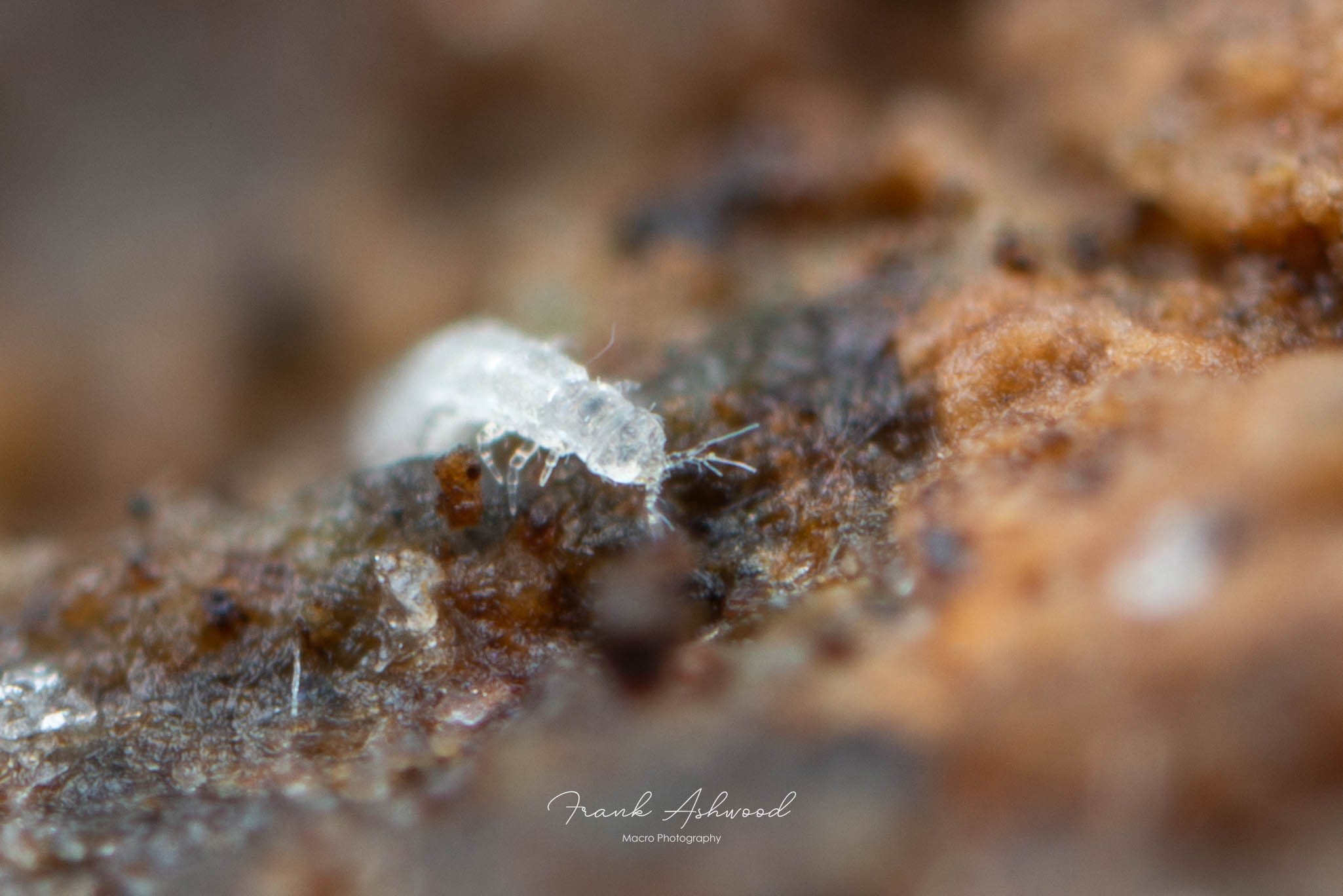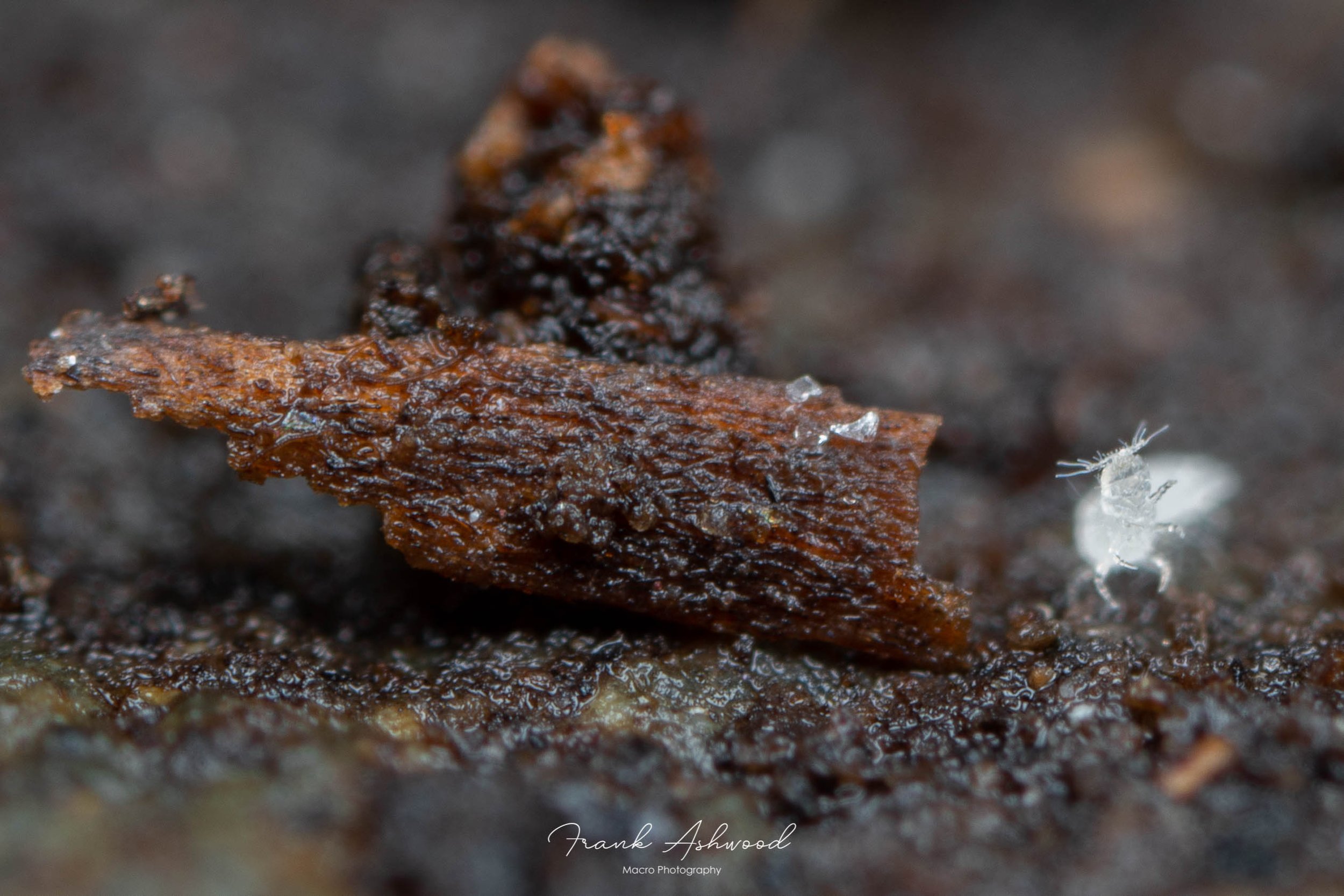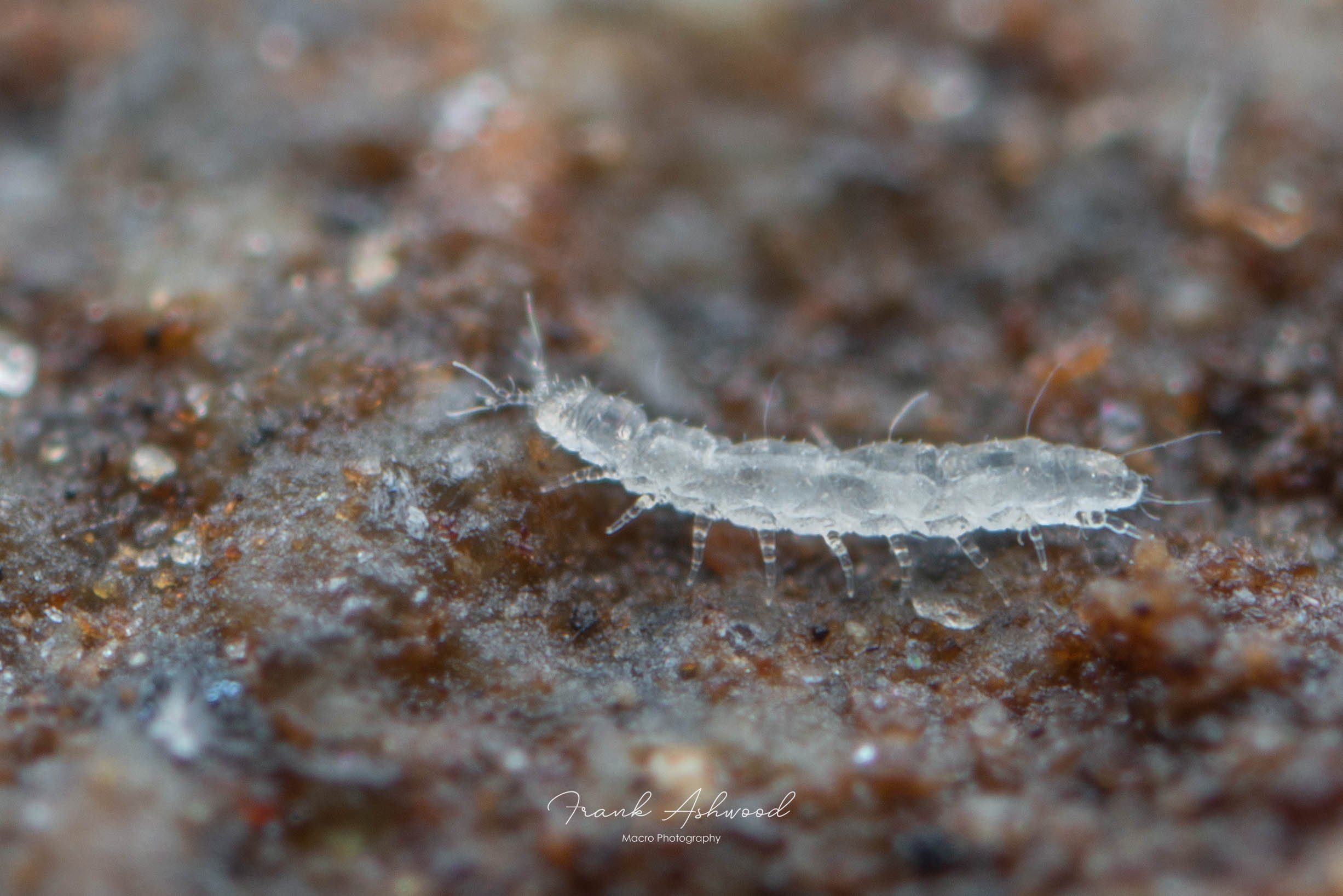Pauropoda
Arthropoda -> Myriapoda -> Pauropoda
Pauropods are remarkable little Myriapods (and I do mean little - most are less than 1.5 mm long), which all possess a unique type of branching antennae, scientifically called ‘biramous’ antennae. Feeding on fungi and organic matter, they’re found in leaf litter, soil, under stones and on decaying wood, but you’d struggle to notice them until you get your eye in. Supposedly, the best way is to look out for their distinctive movement pattern: running rapidly forwards, then stopping, turning, and running in another direction. Rinse and repeat. There’s two main families in the UK, these are the Pauropodidae, which contains most of the species, and the Eurypauropodidae which contains one distinctive species called Trachypauropus britannicus (see photos below). The Pauropodidae tend to look like elongate white cigar-shaped creatures (confession time: I sometimes mistake their head end for their rear end), whilst Eurypauropodidae look a bit more like their millipede ancient relatives. More information and a species checklist for the UK is available at the British Myriapod and Isopod Group’s Pauropod page, and make sure to visit Chaos of Delight by Andy Murray for a wonderful description and macrophotography of Pauropod behaviour, including their preoccupation with preening! There’s also some information on Pauropoda in the GSBI’s Atlas here.

Trachypauropus britannicus, Eurypauropodidae

Pauropodidae
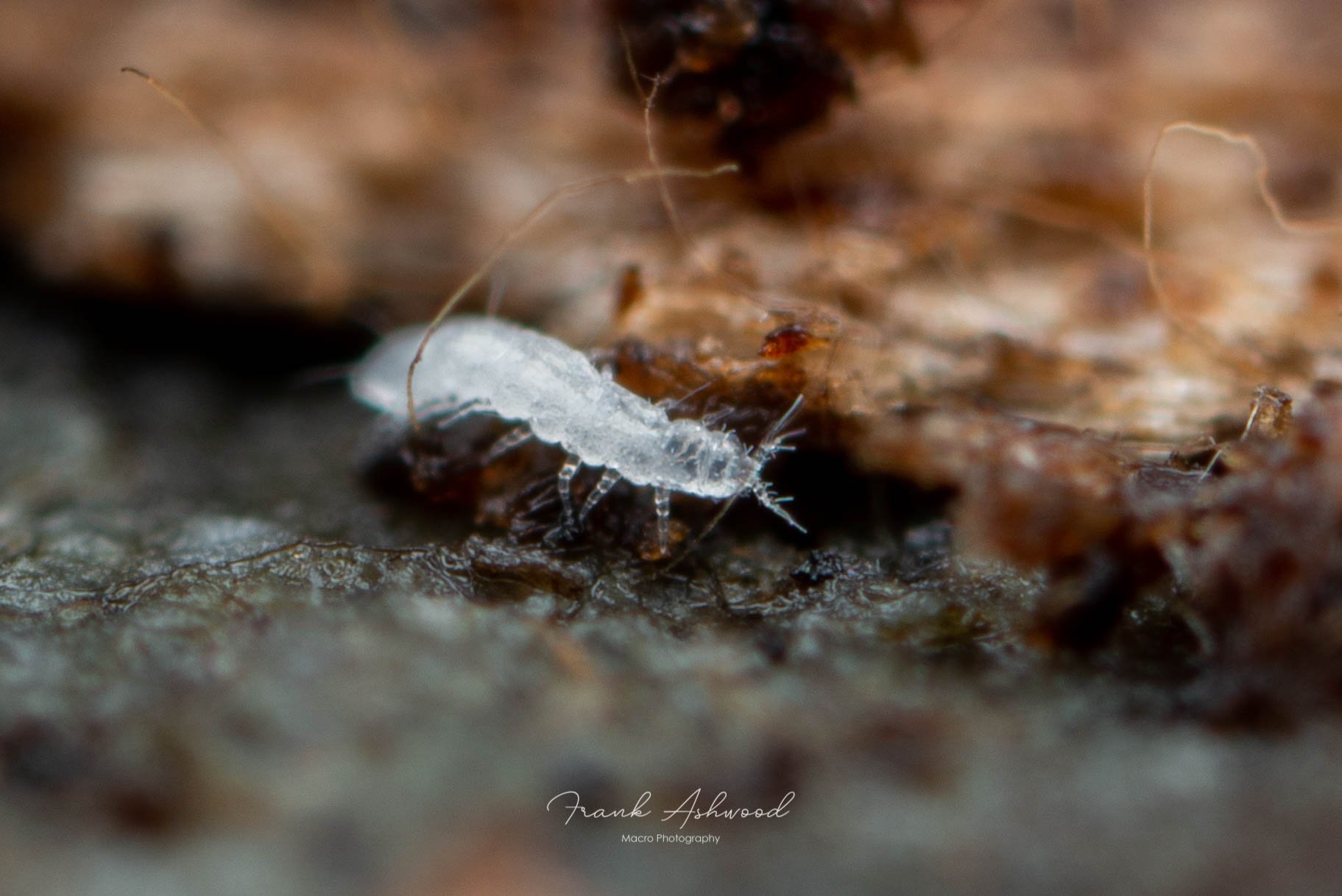

Trachypauropus britannicus, Eurypauropodidae
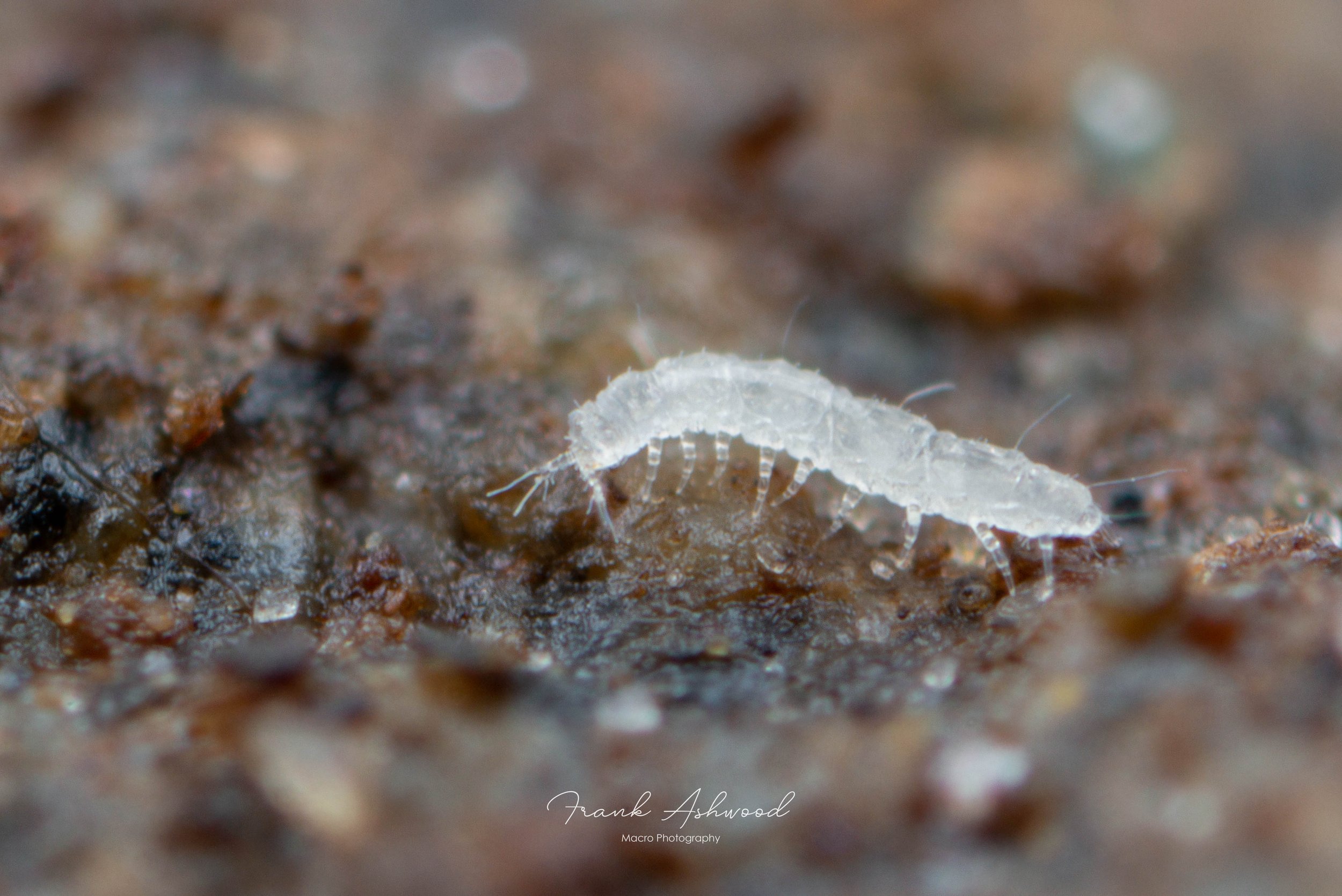
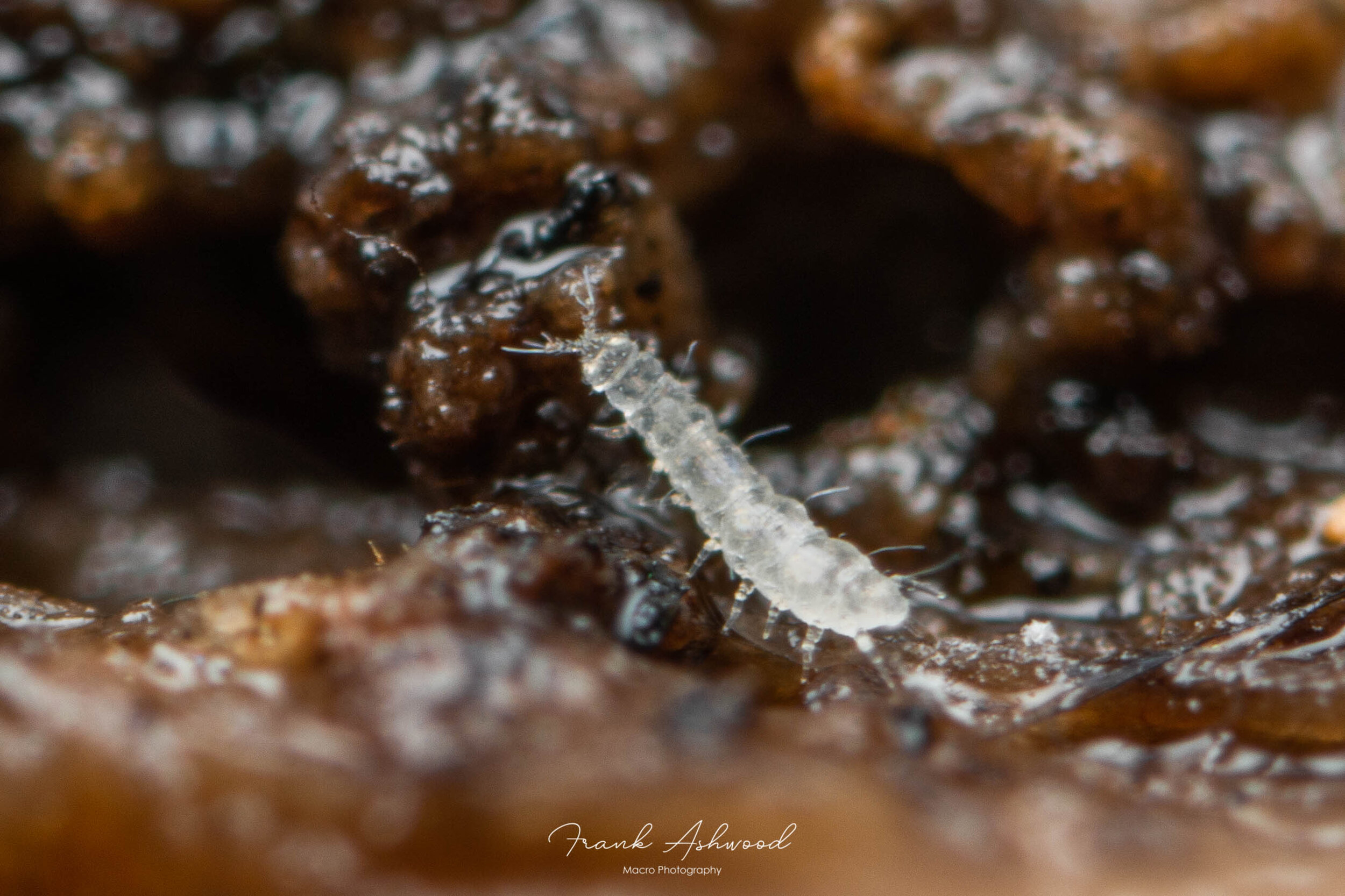
Pauropodidae
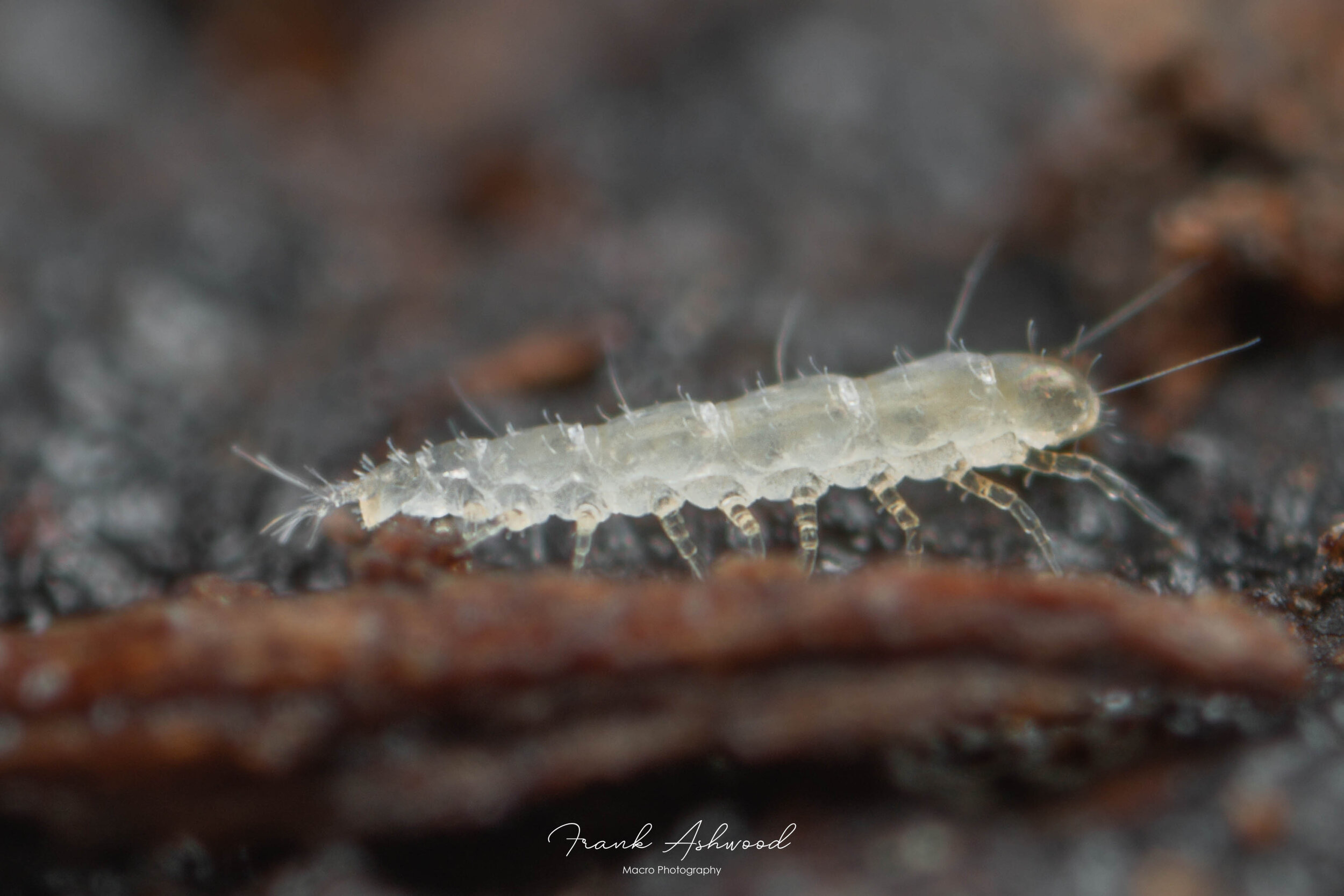
Pauropodidae

